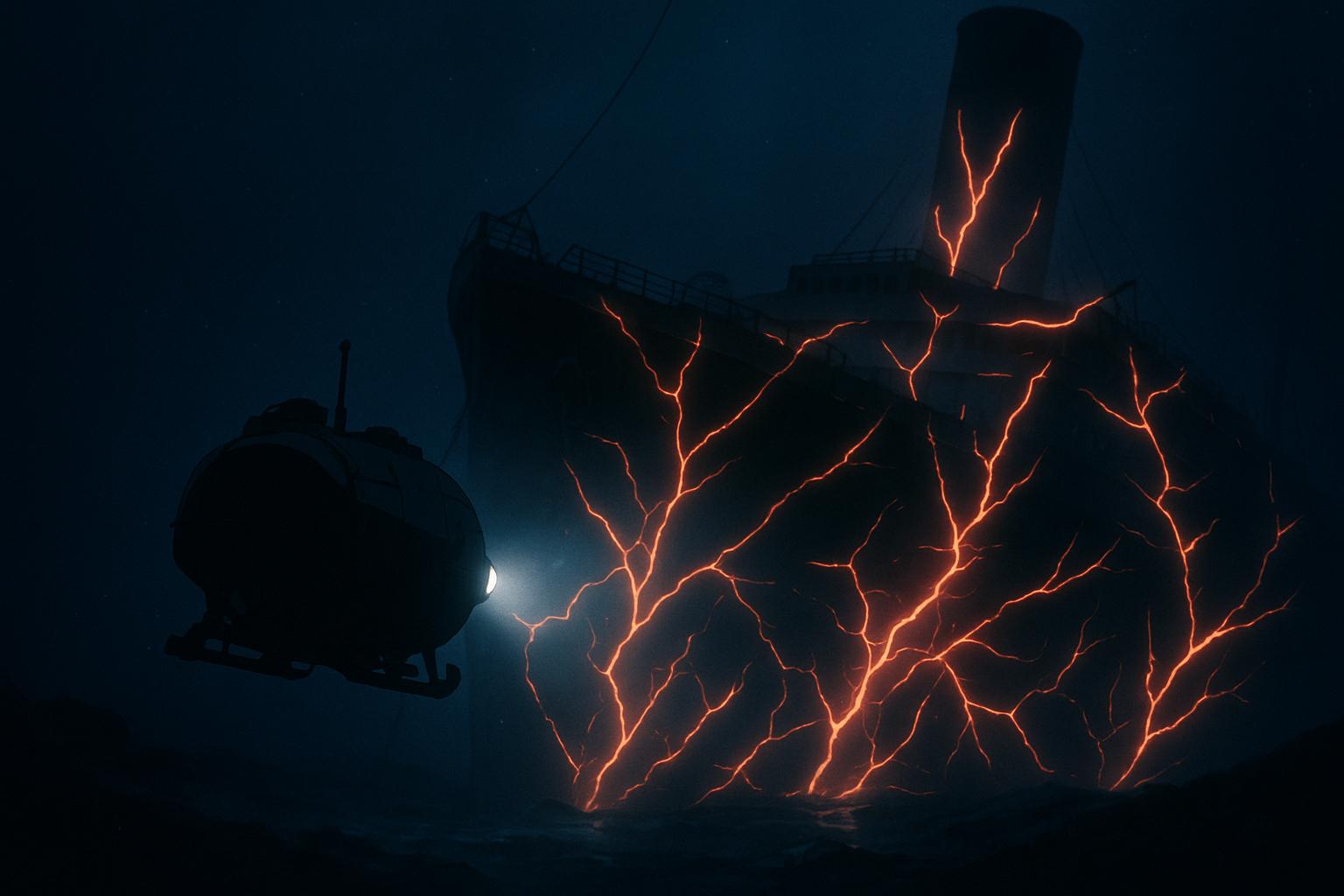Dramatic revelations have emerged regarding the ill-fated Titan submersible, which tragically imploded during a dive to the Titanic wreck site, claiming the lives of five individuals, including prominent British adventurer Hamish Harding and father-and-son duo Shahzada and Suleman Dawood. The Titan, operated by OceanGate Expeditions, was on its journey when disaster struck in June 2023, sparking a global outcry and prompting extensive investigations into the safety of private deep-sea exploration.
A new documentary titled "Implosion: The Titanic Sub Disaster," set to air on BBC Two, unveils harrowing details from a test dive in April 2019. Footage from this exploration demonstrates a range of alarming incidents, including a horrifying noise likened to a gunshot emanating from the Titan's hull. Members of the dive team reported that the lights extinguished before they lost complete vertical thrust following a failure in one of the vessel's battery banks. Submersibles expert Karl Stanley noted the frightening proximity to catastrophe, stating, "we were within a few percentage points of implosion." This ominous experience underscores the inherent risks taken during such extreme explorations.
During the 2019 dive, which was intended to test the submersible’s groundbreaking carbon fibre hull, the crew faced a myriad of challenges. Petros Mathioudakis, an underwater electronics technician who joined the dive, recounted being acutely aware of the dangers involved, reflecting on his exchange with Stockton Rush, the CEO of OceanGate. Mr. Rush reportedly gauged the participant’s willingness to accept risk by asking about their family commitments, indicating an awareness of the potential dangers that lay ahead.
The Titan’s construction has drawn scrutiny from multiple quarters. While OceanGate claimed collaboration with aerospace leaders such as NASA and Boeing, reports suggest that this involvement was limited and that crucial independent reviews of the vessel were neglected. This lack of rigorous assessment has since raised serious concerns regarding the safety protocols observed in the development of the submersible, leading to calls for heightened regulatory oversight in emerging deep-sea tourism.
On June 18, 2023, an acoustic recording released by the U.S. Coast Guard captured what is believed to be the moment of Titan's implosion. This incident has incited discussions on the urgent need to reform safety measures in the private exploration sector, particularly in one marked by minimal regulation and oversight. Experts stress that the Titan disaster should serve as a crucial learning point for the industry's future, to avoid repeating such catastrophic errors.
The aftermath of the Titan's disaster has further unveiled alarming evidence concerning its operational history. In September 2022, during a marine board investigation, details emerged that Stockton Rush was warned about potential flaws in the vessel after previous dives. Notably, shortly after dive 47, a crew member discovered a crack in the hull, indicating problematic delamination in the carbon fibre layers. Such findings exemplified the lack of effective communication regarding safety hazards, as Mr. Stanley lamented his persistent yet seemingly fruitless warnings to Rush over a year leading up to the tragedy.
As public interest in extreme deep-sea tourism grows, so too does the imperative for rigorous safety regulations. This incident highlights a broader issue of an industry grappling with its own ambitions amid perilous ventures. As Howard Lee, president of Discovery Networks, articulated, "we will probe into the fascination with exploration, the risks that we are willing to take, and the ultimate price one can pay when pushing the limits of technology." The forthcoming documentary, alongside ongoing investigations, aims to illuminate these themes and explore how the Titan’s story encapsulates broader implications for deep-sea exploration.
The Titan's final expedition garnered intense media attention during the search efforts, which extended over several days, ultimately leading to the recovery of wreckage from the ocean floor. This call for reflection is not merely about the technological failures that led to the implosion but also about the ethical considerations of venturing into the depths of the ocean. As the industry continues to evolve, it remains imperative to prioritise safety and accountability to protect those drawn to the allure of the unexplored.
Reference Map:
- Paragraph 1 – [1]
- Paragraph 2 – [1], [4]
- Paragraph 3 – [1], [2], [3]
- Paragraph 4 – [1], [6]
- Paragraph 5 – [5], [6], [3]
- Paragraph 6 – [1], [3]
- Paragraph 7 – [1], [2]
Source: Noah Wire Services
